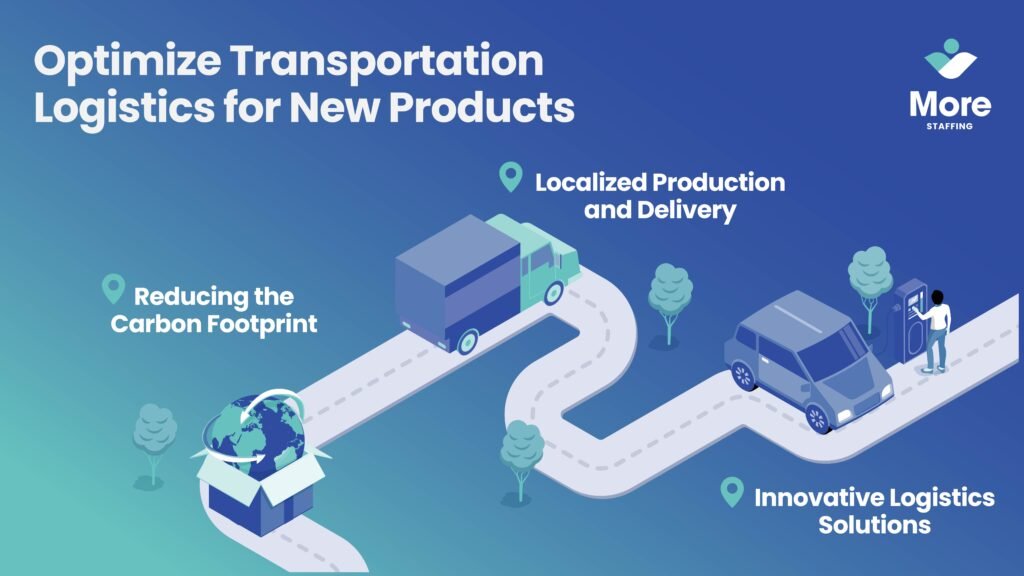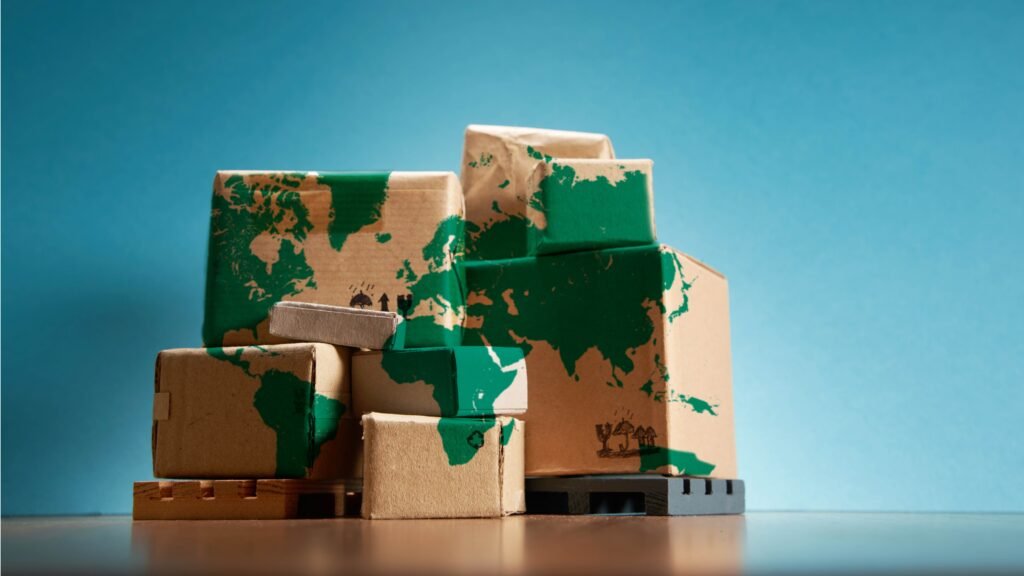Sustainability is a hot topic in e-commerce and everything else these days. More than that, it’s an opportunity to improve your business and do genuine good. We invite you to step into the driver’s seat and embark on the road toward a sustainable supply chain for new product innovations. Here, we’re talking about not just creating and shipping products you can proudly call eco-friendly or sustainable but also ensuring that your supply chain is viable and effective for years to come.
The journey may seem daunting initially, but the destination will be well worth it. Not only will you reduce your environmental impact, but you’ll boost your brand reputation and lower costs along the way. This guide will highlight five key ways to pave the path to sustainability of supply chain. From responsible sourcing to innovative transportation, you’ll gain actionable insights to put into practice within your organization. So buckle up and get ready to transform your supply chain operations for the better. The first stop on this sustainability journey focuses on sourcing responsibly.
supply chain
1. Source Sustainably for New Product Innovations
Sourcing raw materials and components responsibly is crucial when launching new product innovations. You want to ensure your supply chain aligns with sustainable practices from the very start.
Ethical Suppliers
When vetting potential suppliers, look for those committed to environmental and social responsibility. Check if they have certifications like Fair Trade or B Corp or meet industry standards for ethical sourcing.
Many brands now transparently share their supplier lists. Research their track records on worker rights, environmental impact, and community development initiatives. Don’t just take their word for it—dig into third-party audits and ratings, too.
Sustainable Materials
The raw goods you source can make a big difference. Prioritize recycled, renewable, and biodegradable inputs over virgin plastics and other resource-intensive materials. Seek out innovative bio-based alternatives like mycelium leather or fibers derived from agricultural waste.
Look for suppliers that are already incorporating sustainability into their material production. Finding the right partners upfront prevents having to overhaul your supply chain later.
Success Stories
Plenty of companies are already sourcing sustainably for new product lines. Outdoor apparel brand Patagonia only works with BlueSign-approved mills and tanneries to minimize harm from their supply chain. IKEA is working to use only renewable and recycled materials in their furniture lines by 2030.
By carefully vetting your suppliers and material choices, you’ll start any new product innovation on the right foot for environmental responsibility. It’s an essential first step in building a truly sustainable supply chain.
2. Optimize Transportation Logistics for New Products

Inefficient logistics can be a major barrier when launching new product innovations. Transporting materials and finished goods generates a significant carbon footprint that impacts the environment. But optimizing your transportation strategy offers a prime opportunity to build a more sustainable supply chain.
Reducing the Carbon Footprint
One of the biggest sustainability wins is cutting emissions from shipping and distribution. Look for opportunities to consolidate shipments into fuller truckloads. It also reduces the number of vehicles on the road while maximizing capacity utilization.
You can also explore eco-friendly transportation modes like rail or maritime shipping when timelines allow. These options produce fewer emissions per unit than air freight or trucking over long distances.
Innovative Logistics Solutions
New technologies are transforming logistics into greener and smarter operations. Many companies now use software to plan the most fuel-efficient delivery routes, and others have adopted electric vehicle fleets for last-mile distribution in urban areas.
Another emerging solution is autonomous trucking. Self-driving trucks can enable platooning – where multiple vehicles draft closely together to improve aerodynamics and fuel economy. This cutting-edge approach could revolutionize transportation logistics for new products.
Localized Production and Delivery
Finally, localizing specific production and distribution processes is considered. Sourcing raw materials closer to manufacturing sites minimizes shipping distances. Serving regional markets through local warehouses or micro-fulfillment centers reduces last-mile delivery emissions.
Download Now: Manufacturer Audit SOP For E-Commerce Success
3. Reduce Waste in New Product Supply Chains
Reducing waste in new product supply chains is essential for sustainability. Here are some strategies companies can adopt:
Why It Matters
You know that feeling when you unbox a brand new product, excited about your purchase, only to find excessive wasteful packaging? It’s frustrating, right? And that’s just the tip of the iceberg regarding waste generated throughout a product’s supply chain.
Implementing Lean Principles
One effective way to reduce waste is by embracing lean manufacturing principles. This approach focuses on maximizing value while minimizing waste across all processes. By identifying and eliminating non-value-adding activities, you can streamline your operations and cut down on unnecessary waste.
Recycling and Upcycling

But it doesn’t stop there. Recycling and upcycling initiatives can also significantly minimize waste. Look for opportunities to repurpose materials, components, or even entire products. Not only does this reduce your environmental impact, but it can also lead to cost savings and potential revenue streams.
Real-Life Inspiration
Take a look at companies like Dell and HP, which have implemented closed-loop recycling programs for their products. By recovering and refurbishing used electronics, they’ve diverted millions of pounds of waste from landfills while creating new revenue streams.
Or consider Patagonia’s “Worn Wear” program, where customers can trade in used Patagonia gear to be repaired, recycled, or resold. It’s a win-win for the environment and their customers.
The Bottom Line
Reducing waste in your new product supply chains is good for the planet and your bottom line. By embracing lean principles, recycling and upcycling, and learning from real-life success stories, you can create a more sustainable and efficient supply chain that sets you apart from the competition.
4. Use Sustainable Packaging for New Innovations

When launching new product innovations, it’s crucial to prioritize sustainable packaging. Not only does this reduce your environmental impact, it also boosts brand reputation and can drive sales from eco-conscious consumers.
The Power of Green Packaging
Sustainable packaging materials like recycled cardboard, plant-based plastics, and compostable materials are gaining major traction. These innovative solutions reduce waste while still protecting products in transit.
And it’s not just tree-huggers who care – studies show most consumers actively seek out brands using eco-friendly packaging. So, by going green, you’re tapping into a massive market opportunity.
Innovative Packaging, Innovative Brands
Major brands are already leading the sustainable packaging revolution for innovations. Look at Saltwater Brewery’s biodegradable six-pack rings or Lush’s naked product packaging.
Even industry giants like Ikea and Dell are eliminating plastics and Styrofoam in favor of mushroom-based and recycled materials. These bold moves generate positive PR and reinforce their commitment to sustainability.
Reduce, Reuse, Profit
Implementing sustainable packaging can be simple and inexpensive, too. Simple changes like minimizing excess materials, using recycled content, or designing for recyclability can make a big difference.
Plus, lightweight green packaging often reduces shipping costs over time. So you’re not just appealing to conscious consumers – you’re slashing operational expenses, too. It’s a total win-win.
The bottom line? Prioritizing eco-friendly packaging for new product innovations is a smart long-term strategy. It aligns with consumer values, boosts your brand reputation, and can even trim costs over time. Sustainable is the new standard – make sure your products deliver.
5. Implement Energy Efficient Manufacturing for New Products

Adopting energy-efficient practices in your manufacturing processes is a surefire way to build a sustainable supply chain for new product innovations. Not only does it significantly reduce your environmental impact, but it can also lead to substantial cost savings in the long run.
Embrace Renewable Energy Sources
One of the most effective strategies is transitioning to renewable energy sources like solar, wind, or hydroelectric power for your manufacturing facilities. These clean energy alternatives drastically reduce greenhouse gas emissions and your reliance on fossil fuels.
Many companies are already making this shift. For instance, Apple runs its entire operations in Singapore on renewable energy. Their supplier facilities in the country are on track to be completely carbon neutral by 2030.
Optimize Energy-Hungry Processes
Take a close look at the energy-intensive stages of your production line and find ways to optimize them. Replacing outdated, inefficient equipment with modern, energy-saving alternatives can make a huge difference.
For example, L’Oreal implemented highly efficient air compressors and automated lighting systems across their plants, resulting in millions of dollars in energy cost savings annually.
Invest in Energy Management
Proper energy monitoring and management are essential. Leverage smart meters, energy audits, and data analytics to identify wasteful areas and opportunities for improvement. Set concrete energy reduction targets and incentivize employees to meet them.
Schneider Electric provides energy management solutions and “walks the talk”—through concerted energy efficiency drives, they’ve reduced operational energy intensity by over 10%.
By prioritizing energy efficiency in your manufacturing, you’re actively minimizing your carbon footprint while keeping costs down – a win-win for the planet and your bottom line when launching new product innovations.
Conclusion
You now possess the knowledge and tools to integrate sustainability practices into your supply chain. Begin by auditing your current processes, suppliers, and partners. Identify areas for improvement in responsible sourcing, transportation efficiency, waste reduction, packaging, and energy use. With incremental changes, you’ll be on the path to an innovative, eco-friendly supply chain that benefits both the environment and your bottom line.
Don’t wait—take the first step today. Evaluate your supply chain, set improvement goals, and prioritize sustainability as you develop new products with the help of our experts. Your efforts will lead to cost savings, an enhanced brand image, and products consumers feel good about buying.
Now is the time to create positive change through a sustainable supply chain. For more in-depth insights, listen to the latest episode of the Andrew Faris Podcast, where we delve deeper into product innovations and expert strategies on supply chain. For ongoing tips and updates, follow Lara Guevara, More Staffing’s Co-founder and CEO, on X. With over a decade of e-commerce experience, Lara shares valuable insights into supply chain management.
Looking for experts in supply chain to support your business? Discover exceptional talent across every role and level in our profiles section.




